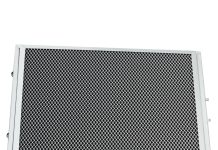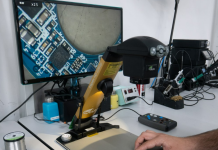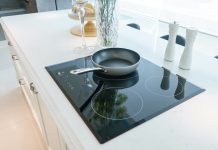At first sight, the whole Bungard equipment seems a production of mini-size printed circuit boards. However, a more attentive examination highlights how the manufacturer has hit the target, creating a production line of this scope.
Those who are going to implement quickly one or more copies of a specific circuit, or test the functions of a prototype rapidly, can certainly rely on the systems by Bungard Elektronik, represented by ELMI. Universities, engineering companies, service suppliers and also development divisions of big manufacturing companies, actually all those who design printed circuit boards, have an efficacious solution within the laboratory’s reach.
The company has operated on the market since the early Sixties, when the founder, Heinz Bungard, started considering the opportunities offered by the development of the young industry of printed circuit boards. He conceived the idea of providing the copper foil with a printed circuit board with a UV light-sensitive photocoating.
The presensitized base material is still the bearing pillar of Bungard product range; the company, in fact, is currently a reliable leader partner in the supply of PCB manufacturing enterprises. When Bungard started the production and the distribution of the presensitized base material, in the meantime they also devised the supply of small-scale processing equipment, a market segment that has been fully ignored for years; in the prototyping and pre-production ambit, it was impossible to achieve small etching or exposure machines.

Implementation of PCB with presensitized base material
Due to this intuition, any designer and producer of prototypes or small series can in-house manufacture his own printed circuit boards, in various versions and error-free, with flexibility and speed.
Only high-quality materials, tested and approved according to the standards in force are used, exploiting a broad range of materials such as FR2, CEM1, FR4 and PTFE, made in panels of various thicknesses and with different thicknesses of copper coating. All standard and special sizes are cut from 570 mm x 1150 mm slabs, to a minimum of 50 mm x 50 mm. A high-quality positive resist is used for the photographic coating, implemented according to a Bungard-property formulation. The resist features the maximum exposure sensitivity, needs limited processing phases and offers wide safety tolerances.
With a controlled 5-micron layer thickness, the resist provides the conditions for a fast and complete exposure, whereas the optimum of the light source is 400 nm and the optical resolution under 30 microns. With Hellas exposure unit, for the whole range of offered products, the exposure lasts about 90 seconds. After around 45 seconds, each printed circuit board can leave the special developer bath at an environmental temperature of 20°C. To protect the photographic coating against dust, mechanical damages and undesired exposure, all materials are coated by a blue film.

Since 981 Bungard has started selling aluminium panels, which are oxidized with a special treatment sequence and then coated by a positive photoresist. Alucorex, this is the name of the product that aimed at making the implementation of front panels, scales, labels and pad printing clichés very easy.
Solutions are available also for SMT stencils and they can be processed quickly and economically. They are plates of photo-coated brass or German silver plates (alloy based on 60% of copper, 20% of nickel and 20% of zinc) that can operate in the same machines, with the same chemistry and without interferences in processes.
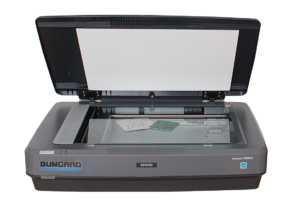
Chemistry under control
The German company supplies solutions for all main upstream and downstream operations involved during the manufacturing process of printed circuit boards. Examples of these solutions are the NE-Cut board cutter with a cutting width of 530 mm, the photoplotter raster Filmstar with a resolution of 8000 dpi, Hellas parallel-light exposure unit with 8000-Watt power.
While industrial systems have only big-size etching machines, Bungard etching machines generally consist of a single unit. The customer can choose between a fixed spray etching machine for single-sided or double-sided panels or a spray etching machine with conveyor belt.
The Splash-Center is a wet processing machine with various plunge tanks for static and spray rinse and integrated developer.
The DL 500 etching system is appreciated for the safety of its work procedure, the operator extracts the clean boards without getting in touch with chemical substances; due to its productivity, the system allows implementing small series with high rapidity.
Whenever chemical substances are used, a wastewater treatment plant is a real need. Whoever produces PCB can choose among four models with variable flow rates and absorption capacities.
With space requisites under half square metre, wastewater treatment plants perfectly suit small laboratories. The system is compact, with a completely closed circuit when nothing is released outside, because all substances are extracted from the wastewater and the demineralized water returns to production machines or to the waste. Two or three ion-exchange columns are used and, depending on the type, they are joined by a column for the PH neutralization.
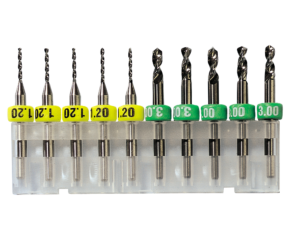
Finishing equipment and materials for a turnkey laboratory
Even if it is considered a provider of entry level solutions, Bungard supplies all that can be necessary to have a complete and professional printed circuit board, like for instance the mechanical press for the plating of through-holes. Hollow rivets are inserted into the holes of the double-sided printed circuit board and are then pressed to obtain the mechanical seal. Even laboratory technicians without any mechanical knowledge can carry out this work, while various electroplating machines are available for more complex printed circuit boards and for holes with diameter under 0.6 mm.

Drilling and milling solutions, including software, are at disposal for the mechanical machining of PCB. The smallest version is the Variodrill system, used to execute the holes in a PCB where the drilling movement is operated by a foot switch. The board is positioned on a drill table, under a magnifier optics, while the drill bit rises from the bottom with a variable speed from 10,000 to 30,000 rpm. The supply includes a suction system of the drill dust.
CCD/2drilling-milling machine is more professional. The machine mills and drills printed circuit boards and aluminium front panels, operates with a high-frequency spindle and it is also equipped with a depth limiter. Stepper motors control the movement of x, y and z axes on high-precision toothed belts. Panels can be fixed in whatever position on the worktable of the machine, which is equipped with a specific grill. The operator can work with stops or locking plates or register pins to secure or to register the printed circuit boards and front panels. A conversion software is also available for the calculation of milling paths starting from standard Gerber data.
Highly professional is the CCD system, designed for the milling and drilling of both printed circuit boards and of surfaces in general. This machine closely approaches a professional industrial system that operates in large-scale production. The high-frequency spindle reaches speeds of 60,000 rpm and it is adjustable in continuous and controlled via software. Various data formats can be read and processed directly with the aid of the software driver (included) for Excellon, Sieb-Meier and HPGL. Therefore, a processing guided by menus of single orders is possible, as well as the development of statistics about tools and productivity. It is equipped with the Teach-in function and automatic tool changer; it features pitch resolution of 0.00625 mm at the speed of about 20,000 holes per hour.
The supply for the professional prototyping of PCB is completed by the offer of brushing machines, laminators, dip coaters, hot air dryers, multilayer presses and electroplating machines of through-holes of various sizes.
All Bungard systems share the use of the same technology and the application of the same concepts at the base of industrial machines for large-scale production, aimed at obtaining the same quality although on small-scale productions.

